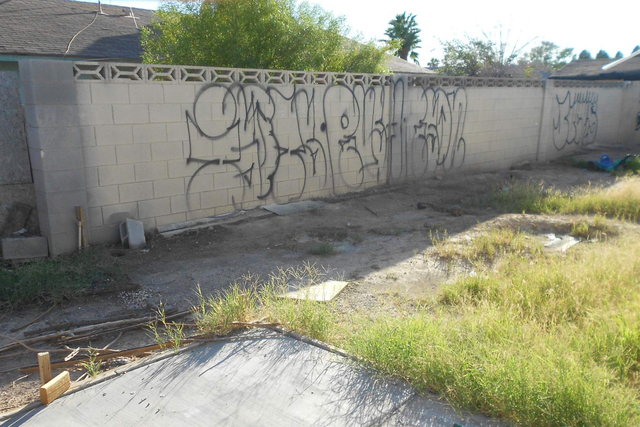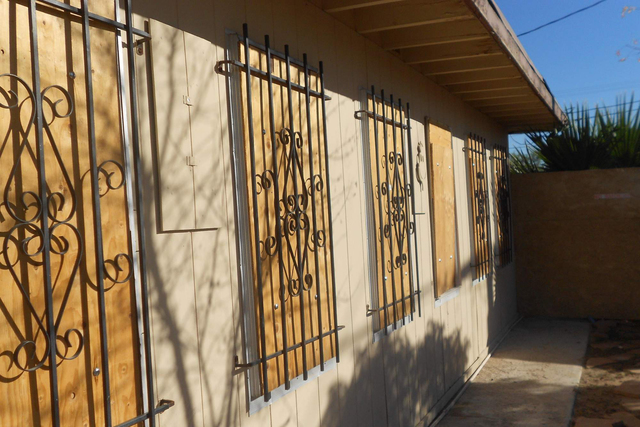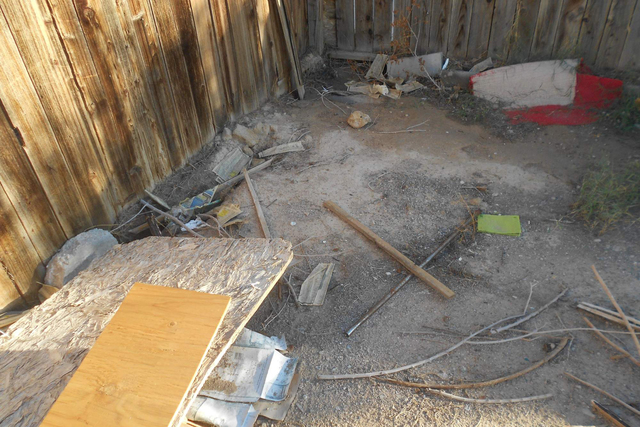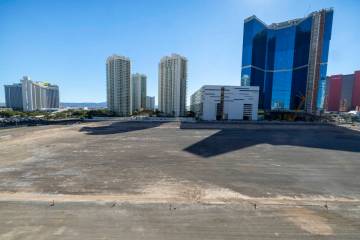Lawsuit alleges mortgage giant maintained foreclosed homes in white neighborhoods better
Housing advocates have sued mortgage giant Fannie Mae, alleging a “stark pattern of discriminatory conduct” over its upkeep of foreclosed homes in Las Vegas and dozens of other metro areas.
The National Fair Housing Alliance and 20 local housing groups sued this week after investigating more than 2,300 Fannie-owned homes in 38 metro areas. According to the NFHA, homes in predominantly white neighborhoods were kept in better shape than those in predominantly black and Hispanic communities.
Fannie Mae’s foreclosed properties in mostly white neighborhoods were “far more likely” to have their lawns mowed and edged regularly, weeds and vines cleared, windows and doors secured or repaired, trash removed, leaves raked and graffiti erased.
Homes in mostly black and Hispanic neighborhoods, however, were “more likely to be left neglected” with trash and debris on the property, overgrown grass and invasive plants. Moreover, windows and doors were often “unsecured, left wide open, or boarded,” according to a news release.
The housing groups filed their 117-page lawsuit Monday against the government-controlled company in U.S. District Court for the Northern District of California. According to the complaint, they conducted their investigation between 2011 and 2015.
In a statement, Fannie Mae spokeswoman Alicia Jones said the company “strongly” disagrees with the allegations and that its maintenance standards for foreclosed homes “are designed to ensure that all properties are tended to and treated equally.”
Shanti Abedin, director of inclusive communities for the Washington, D.C.-based NFHA, told the Review-Journal that the group investigated 38 properties in the Las Vegas area, all in 2012. She figured none are still owned by Fannie Mae.
She also said the group couldn’t disclose the addresses of homes that were part of the lawsuit.
In Las Vegas, according to the complaint, 40.6 percent of Fannie-owned homes in communities of color had peeling or chipped paint, compared to 16.7 percent in mostly white neighborhoods. Some 34.4 percent of its foreclosed homes in non-white neighborhoods had overgrown or dead shrubbery, compared to 16.7 percent in predominantly white areas, and 9.4 percent of its homes in communities of color had a damaged fence, compared to none in mostly white neighborhoods.
“Generally, it was the same sort of pattern that we saw across the (country),” Abedin said.
Among the groups’ reported findings nationally:
■ 41.5 percent of Fannie’s foreclosed properties in black and Hispanic communities had a broken, boarded or unsecured window, compared to 19.1 percent in white neighborhoods
■ 39 percent of its homes in non-white neighborhoods had trash or debris on the property, compared to 14.9 percent in white neighborhoods
■ 30.3 percent of its homes in communities of color had holes in the structure of the building, compared to 12.7 percent in white areas
■ 21.8 percent of its homes in black and Hispanic neighborhoods had exposed or tampered-with utilities, compared to 9.3 percent in white neighborhoods.
Fannie Mae, formally known as the Federal National Mortgage Association, was created by Congress and buys mortgages from lenders.
The NFHA says it notified the company “many times” in the past several years “of its failure to maintain and market its foreclosed homes” in black and Hispanic communities as it did in mostly white areas.
But, the group says, Fannie Mae “persisted in its willful neglect” of these homes.
The plaintiffs are seeking, among other things, a jury trial and unspecified amounts of punitive damages.
Contact Eli Segall at 702-383-0342 or esegall@reviewjournal.com. Follow @eli_segall on Twitter.































